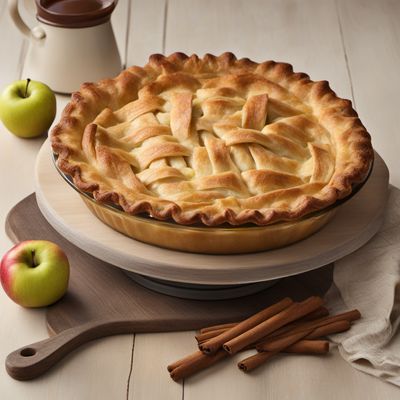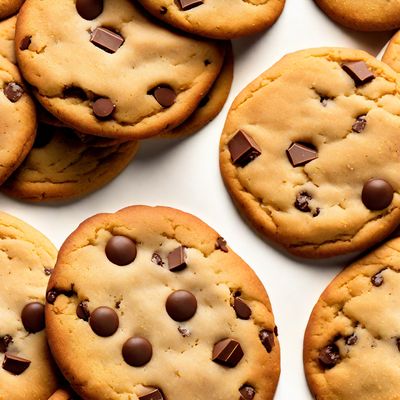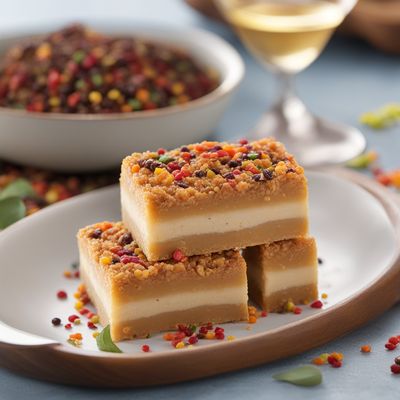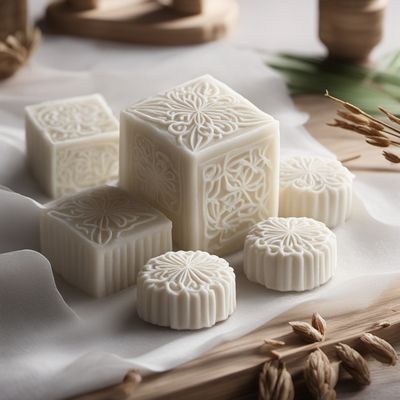
Ingredient
Shortening and similar baking fats
The Secret to Flaky Pastries
Shortening and similar baking fats are solid fats that are used in baking to create tender and flaky textures in pastries, cakes, and other baked goods. They are typically made from hydrogenated vegetable oils, which have been processed to have a high melting point. Shortening has a smooth and creamy texture, while other baking fats like lard or butter have their own distinct characteristics that contribute to the final product.
Origins and history
The use of shortening and similar baking fats in baking can be traced back to the early 20th century when hydrogenation techniques were developed. These fats became popular due to their ability to create tender and flaky pastries. Over time, other baking fats like lard and butter have also been widely used in baking, each offering unique flavors and textures to baked goods.
Nutritional information
Shortening and similar baking fats are high in calories and fat. They are primarily composed of saturated and trans fats, which should be consumed in moderation. It is important to consider the overall fat content in a recipe when using these fats and to balance it with other healthier ingredients.
Allergens
Shortening and similar baking fats may contain allergens like soy or dairy, depending on the specific brand or type. Individuals with known allergies or sensitivities should carefully read the ingredient labels and choose products that are suitable for their dietary needs.
How to select
When selecting shortening or other baking fats, look for products that are labeled as suitable for baking. Choose a brand that is known for its quality and reliability. It is also important to check the expiration date to ensure freshness. Some bakers prefer to use specific types of fats, like butter or lard, for their unique flavors and textures.
Storage recommendations
Shortening and similar baking fats should be stored in a cool and dry place, away from direct sunlight and heat sources. It is best to keep them in airtight containers or their original packaging to prevent them from absorbing odors or moisture. Proper storage will help maintain their freshness and quality.
How to produce
Shortening and similar baking fats are typically produced in large-scale manufacturing facilities. However, amateur bakers can experiment with making their own rendered lard or clarified butter at home. There are various online resources and tutorials available that provide step-by-step instructions for producing these fats.
Preparation tips
When using shortening or similar baking fats in recipes, it is important to follow the instructions and measurements provided. These fats can be used to make flaky pie crusts, tender cakes, and biscuits. They can also be used to create buttercream frostings or to add richness to cookies and bars. It is important to note that substituting one type of fat for another may alter the texture and flavor of the final product, so it is best to follow the recipe as closely as possible.
Culinary uses
Shortening and similar baking fats are widely used in baking, particularly in recipes that require a tender and flaky texture. They are commonly used in pie crusts, biscuits, cakes, cookies, and pastries. These fats are readily available in grocery stores, supermarkets, and specialty baking supply stores.
More ingredients from this category
Recipes using Shortening and similar baking fats

Japanese Matcha Soufflé
Zen Delight: Fluffy Matcha Soufflé with a Japanese Twist

Marlborough Apple Pie
Apple Delight: A Twist on the Classic English Marlborough Pie

Classic Cherry Pie
Tart and Juicy: A Classic Cherry Pie Recipe

Ocvirkove Pogačice (Crispy Slovenian Crackers)
Slovenian Delight: Crispy Ocvirkove Pogačice Crackers

Classic Chocolate Chip Cookies
Fast Food's Favorite Chocolate Chip Cookies

Vegetarian Turrón de Doña Pepa
Sweet Delight: Vegetarian Turrón de Doña Pepa

Tamales de Capitas: Layers of Flavor
Mexican Delight: Layered Tamales with a Twist

Snowy Delights: Homemade Snow Skin Mooncakes
Frosty Blossoms: Exquisite Snow Skin Mooncakes

Classic Apple Pie
Deliciously Sweet Apple Pie: A Vegetarian Twist on a Classic American Dessert

Tamal de Olla with Salsa Verde
Savory Delight: Traditional Mexican Tamal de Olla with a Tangy Salsa Verde Twist
